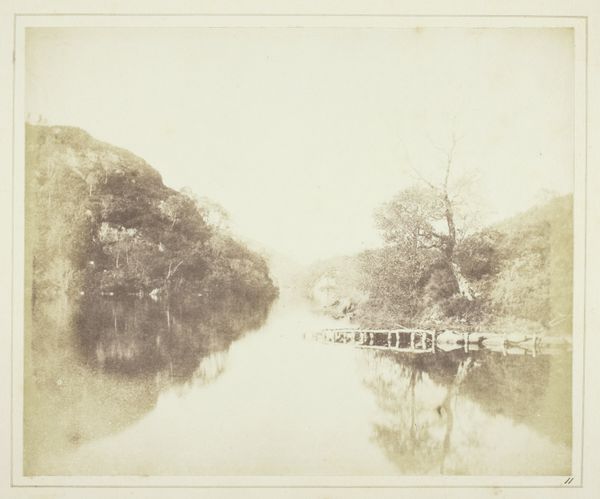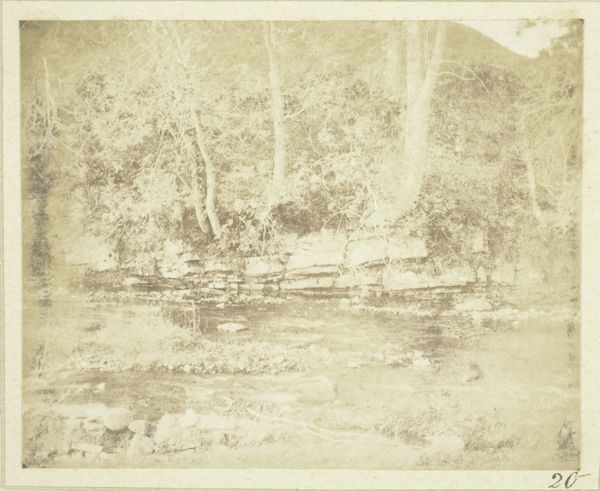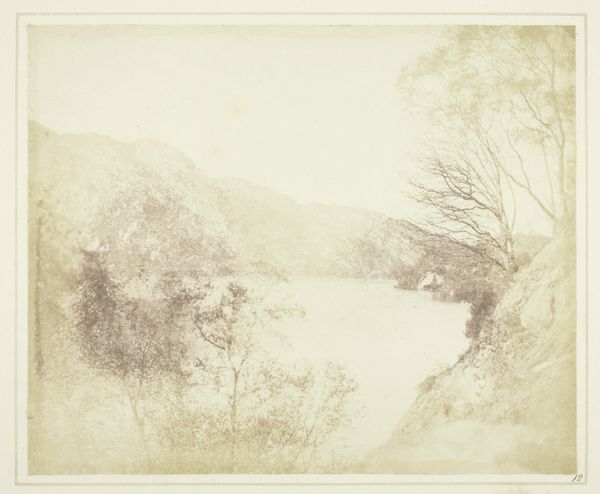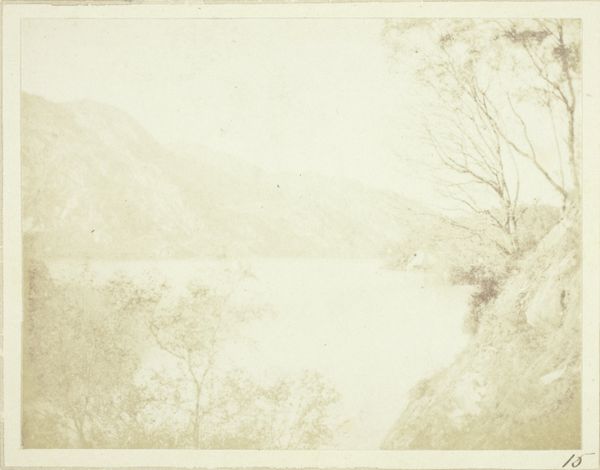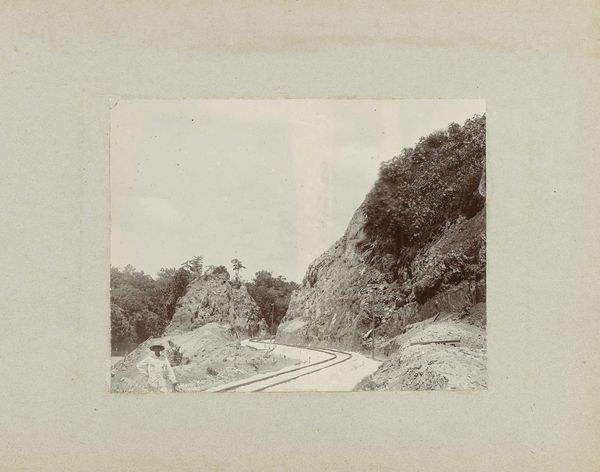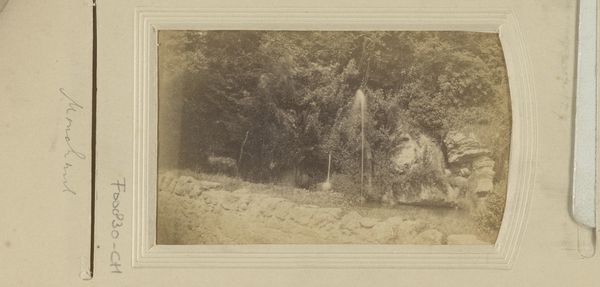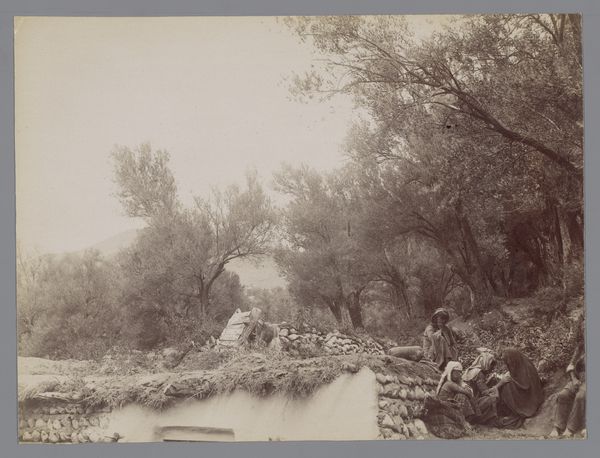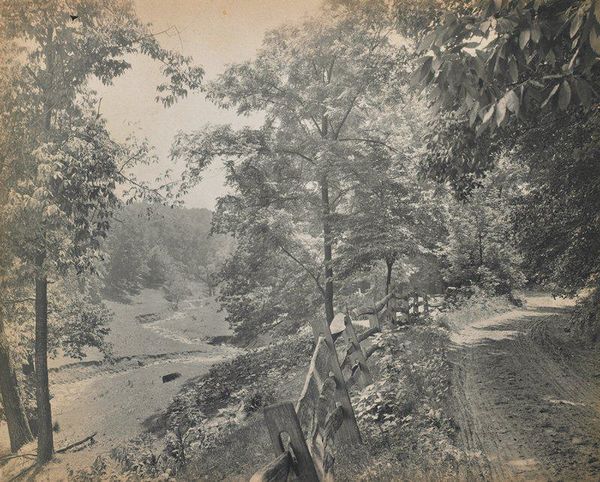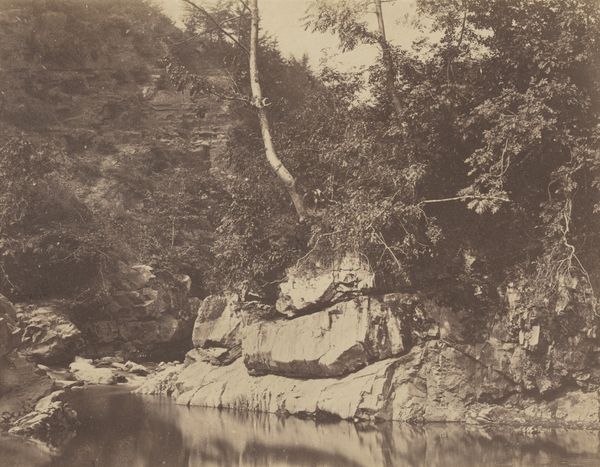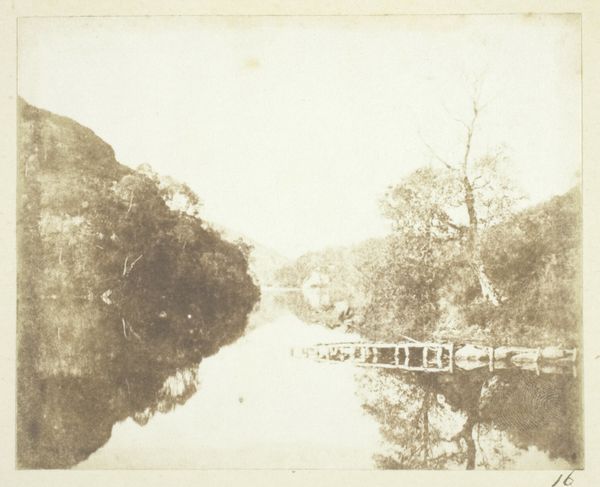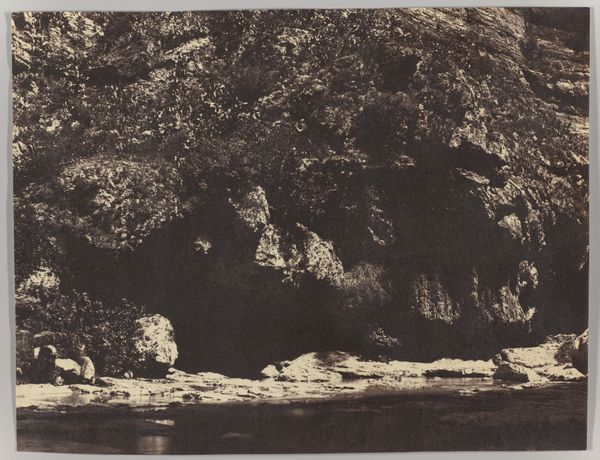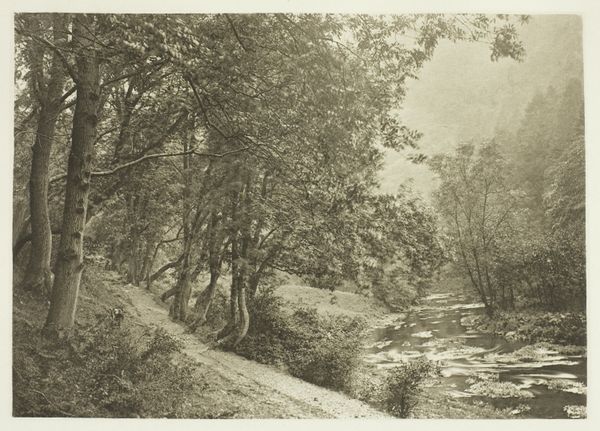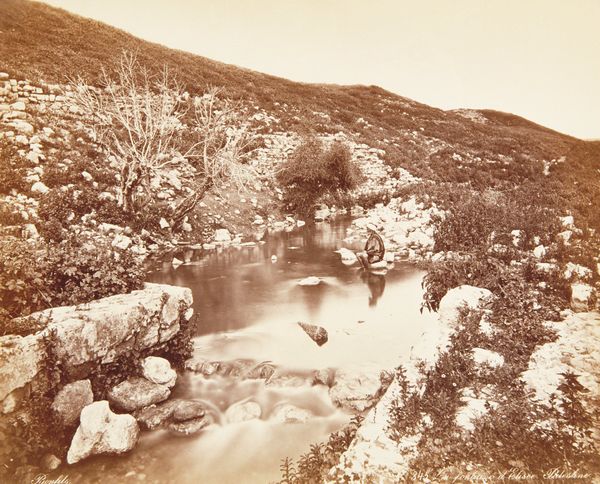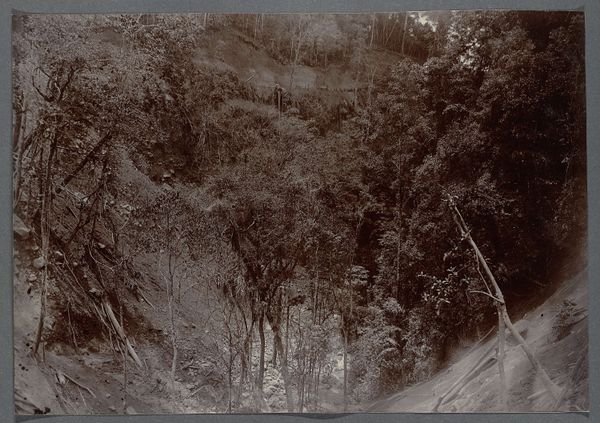
print, paper, photography
#
still-life-photography
#
16_19th-century
# print
#
landscape
#
paper
#
photography
#
england
#
romanticism
Dimensions: 17.1 × 20.6 cm (image/paper); 24.1 × 30.5 cm (page/mount)
Copyright: Public Domain
Curator: Here we have William Henry Fox Talbot's "Loch Katrine," a landscape print from 1844. Editor: There's a ghostly, ethereal quality to it. The tonal range is so limited, everything feels… submerged. Curator: Indeed. Loch Katrine in Scotland was made using the calotype process, an early photographic technique using paper negatives. What does that say to you about the object's history? Editor: The calotype printing is everything here. This wasn’t about a perfectly crisp image— it’s about layers of chemicals reacting, time interacting with material. Each print becomes this uniquely crafted artifact rather than a mechanically reproduced image. Look at the surface, and how soft the reflections in the water become! Curator: It also speaks to Romanticism, that era when feelings and symbolic forms take precedence. Look at the subject: that particular loch in the Scottish Highlands was made famous by Sir Walter Scott in *The Lady of the Lake*. What emotional echoes are at play here? Editor: Definitely melancholy, a contemplation on landscape. Though also about human impact on nature - notice those very solid jetties and boats. Labor is needed here to maintain a connection between water, trade and resources. The picture flattens how closely interwoven all of that activity is in a place like the Trossachs. Curator: This spot would have already carried literary weight by 1844; placing boats on the water immediately speaks to a mode of transport, but more symbolically as a connector, conveying history itself. This isn’t only about how we perceive this space, it's how we weave tales around it, passing them through generations. Editor: And let’s consider the physical print, the paper itself. Someone coated, exposed, developed, and fixed it. We’re seeing both a representation and an artifact tied to the emergence of a new medium, born out of craft as much as scientific advancement. Curator: We see, in short, the evolution of seeing. How photography redefines memory itself through the creation of potent cultural symbols. Editor: And reminds us to interrogate the act of making, not just the image. To connect a physical moment to the experience of looking at a photo over a century and a half later.
Comments
No comments
Be the first to comment and join the conversation on the ultimate creative platform.
